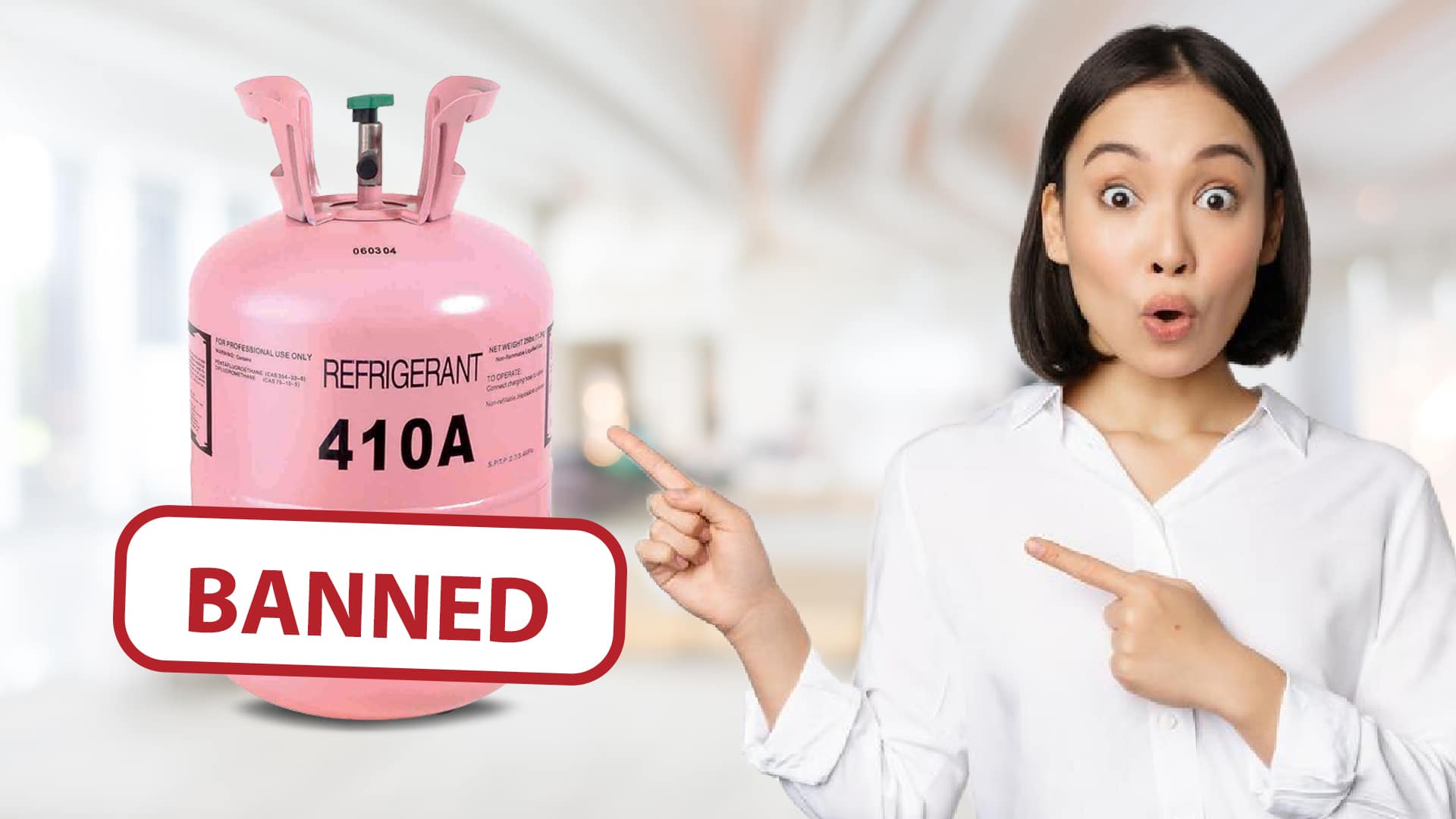
It’s finally here. The Environmental Protection Agency (EPA) has introduced new refrigerant regulations aimed at reducing greenhouse gas emissions.
What does this mean for you?
These regulations mean manufacturers are phasing out certain kinds of hydrofluorocarbon (HFC) refrigerants used most commonly in air conditioning and refrigeration systems. Research has shown these particular HFCs, particularly R410A, may contribute to global warming when released into the atmosphere, so they’ve been banned. In other words, new HVAC systems will now be required to use products with other, more advanced formulations. According to the American Innovation and Manufacturing (AIM) Act that was signed into law in 2020, R410A and similar high GWP (Global Warming Potential) production is to be reduced 85% by 2036. Whether or not that happens remains to be seen, but homeowners with existing HVAC systems and those planning new installations should take note. Cost, maintenance, and environmental impact of home cooling systems will all be affected.
Transition to Eco-Friendly Alternatives
As you might expect, the transition away from older HFCs has led to the introduction of eco-friendly refrigerants like R32 and R454B, both of which have been rated as HFCs with lower Global Warming Potential (GWP) values than their predecessors. New HVAC systems may use one of these newer refrigerants. Your existing system probably doesn’t, however, and for now, that’s okay too. However, homeowners should be aware of the change, and that these products are more flammable than their predecessors, which adds complexity and cost to their installation procedure.
Potential Cost Implications
Unfortunately, with this gradual phase-out of conventional HFCs, the cost of these “older” refrigerants is expected to rise. Homeowners may come up against this added expense when repairing existing air conditioning. And while retrofitting your HVAC to accommodate these new refrigerants may seem like an option, the reality is that it is usually an expensive, impractical process. Ultimately, for most homeowners, replacing an aging system with one that uses low-GWP refrigerants may ultimately be cheaper.
Maintenance and Safety Considerations
If you’re a homeowner with older HVAC, maintain your current equipment to get the most from your heating and cooling. When it is time to replace your system, keep in mind that these newer refrigerants are also more flammable. Insist on a licensed and trained HVAC technician to install and service these newer models. Be sure leak detectors are included to handle the flammability issue.
Moving Forward
In the coming years, the impact of these new refrigerant regulations will continue to affect both homeowners and HVAC professionals. Stay informed with Air-Tro. We’re committed to helping you maintain indoor comfort all year round.
If you have any questions about the new refrigerants, call the heating and cooling pros you can trust at Air-Tro at (626) 357-3535.
